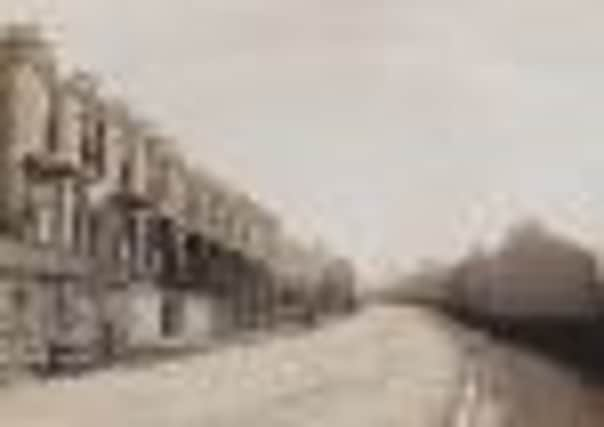ROGER FROST: Holme at the heart of Cliviger


Cliviger, which is to the east of Burnley, is one of those places in which there are several villages none of which shares its name with that of the township. The other centres of population include Walk Mill, Mereclough and Overtown and the four villages, including Holme, are quite distinctive.
Most of the communities remained agricultural but Walk Mill, in the west of the township and on the banks of a very overworked stream was, as the name suggests, an industrial village. It was here, very many years ago, a fulling mill and corn mill were established. Of course they used the waters of the stream but, later, using steam power, a cotton mill, an ice works and a brewery were built. However, Walk Mill’s main commercial activity was coal mining and there are still a number of remains of this industry to be found in this part of Cliviger.
Advertisement
Hide AdAdvertisement
Hide AdA visit to any of the villages is always rewarding. It does not matter how often I visit Holme, perhaps the most interesting of Cliviger’s villages and the subject of this article, but whenever I do so I invariably find something I had not noticed before. I don’t know if this makes me less observant than I ought to be but I am glad it has worked out like this. Every walk along Holme’s Burnley Road becomes something of an adventure. Take my advice – if you want to get to know a community, visit it as a pedestrian and pass the time of day with the people who live there. You will be surprised by how rewarding this approach can be.
Holme is at Cliviger’s historic heart. The village contains the Parish Church, with its wonderful graveyard, the village school (once attended by my father), two splendid inns and the remains of the ancient Holme, the former house of the Whitaker family. A feature often missed is the village stocks which stand in a well-maintained enclosure by the lychgate. On a wall of this enclosure is a memorial to the well-known broadcaster, and Cliviger resident, Eric Halsall, who made his name as a writer and presenter of the television programme “One Man And His Dog”.
There should be at least one other memorial plaque in Holme, and that would be to Thomas Dunham Whitaker, who is regarded as the founder of the field of study known as Local History. Before Whitaker’s time what we now know as local history was the province of antiquarians who were interested in the family trees of the gentry and in which family had the right to sit in which pew in the parish church.
T.D. Whitaker changed all that. He did have access to Christopher Towneley’s researches, which were held at Towneley Hall and were of an antiquarian nature, but Whitaker visited places which interested him making observations about what he saw. When, for instance, he wanted to see limestone hushings, otherwise limestone scarrs, he visited Thursden in Briercliffe and produced the best surviving description of what this activity was all about.
Advertisement
Hide AdAdvertisement
Hide AdWhen in Holme we should not miss out the remains of the ancient smithy. These are on the same side of Burnley Road as the Ram Inn and, today, all we have left is a small garden with a remodelled smithy at its centre. The gate is dated 1949, the year in which the work was carried out, but, as we have photos of what the smithy looked like many years ago, I think it a pity there is not a picture of what was, in days gone by, a rival to the church for its significance to the community.
In fact, when I think of it, Cliviger should have more pride in its history and an information board about the township’s story should be placed in the smithy gardens for all to see.
Getting back to the picture, the postcard gives us a view of Holme taken from the Walk Mill or Bull’s Head end of the village.
The property on the left is named as South View, on the card, but Cliviger is difficult to interpret so far as property is concerned as the house numbers in early documents, including Commercial Directories, do not coincide with the present day numbering. It would not be too difficult to resolve this problem, which also applies to Worsthorne, but it is one which, as yet, I have not tackled.
Advertisement
Hide AdAdvertisement
Hide AdSouth View, which runs from 350 Burnley Road to 380, is well named as some of the properties have very good views across green fields and woodland to the Deerplay area. The houses themselves were not all built at the same time there being three distinct house styles. The eight (of 16 in the row) furthest away from the camera were constructed by the Ark of Friendship, Lodge 1033 in 1890. These can be identified because, in the photo, these houses do not have bay windows.
There is much more to say about today’s photo, so expect Part 2 of this article next week.